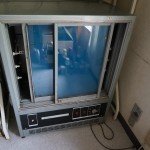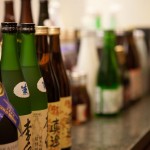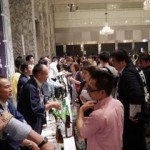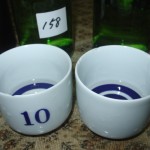Q1: What is sake? Is it a beer? Is it a wine? Is it a spirit?
Sake is a beverage fermented from rice, which is a grain. This would make it more of a beer than a wine. Yet, sake is not carbonated, and flavor-wise is closer to wine than beer, although it is indeed uniquely different from wine. Sake is not a distilled beverage, and is not even remotely related to gin, vodka or other spirits.
Q2: What is the alcohol content of sake?
Sake is generally between 15% and 17% alcohol.
Q3: How long does it take to brew sake?
Basically about a month. It can be a bit longer for ginjo-shu, including all the steps. Also, this does not include the ( usually) six-month period sake is “aged” before release.
Q4: Is sake aged like wine ? Is there such a thing as “vintage” sake?
In general, sake is not aged (beyond the six month period mentioned), and is meant to be consumed soon after purchase. If kept cold and dark, it will last six months to a year without degradation in flavor. There are exceptions, as some sake is deliberately aged. There is no such thing as a vintage year in the sake world. Be sure, then, to notice the bottling date on the label. If the sake was brewed in Japan, note that the year 10 (for Heisei 10) is 1998. So a sake with 9.4.23 would have been bottled on April 23, 1997. Avoid! Try to buy a sake bottled within the last year, at least. If you found it refrigerated, take one more sigh of relief. If not, it may not be totally fresh.
Q5: How should sake be stored?
Sake should be stored away from light and kept cool. Refrigeration is best, although not absolutely necessary unless the sake has not been pasteurized.
Q6: Is sake better than other alcoholic beverages for your health?
Beyond the normal pros and cons of alcohol consumption, note that sake is free from sulfites. It is also light and comparatively free of hangover-causing congeners. Premium sake is free from additives and preservatives.
Q7: How many types of sake are there?
From a production point of view, there are five basic types (see Types of Sake for details). Note that there are several other less-common types as well.
Q8: What are some good brands you can recommend?
How much time do you have? The best thing to do is to see John Gauntner’s Top 100 Sake Picks on his Sake World homepage.
Q9: What price range should I expect?
First of all, where are you? Although the sky’s the limit, more expensive (= better = more desirable) is definitely NOT the case. Good sake is not cheap, but it doesn’t need to be excessively priced. If you are in Japan, 2500 to 5000 yen for a 1.8 liter bottle, or 1200 to 2500 for a 720ml bottle, is a good range. In the US, that might come out to $35 to $70 for a 1.8 liter bottle, or $18 to $37. Unfortunately the price about doubles when it gets imported and goes through the system. Naturally, there is some fine US-produced sake for about half the above prices that are great values.
Q10: How can one tell a good sake from a bad sake?
If you do not have a chance to taste it, begin by trying to buy something with the words Junmai-shu, or Honjozo-shu, or Ginjo-shu or Daiginjo-shu on it. If you do have the chance to taste it, look for balance. Nothing should be cloying or pushy in the flavor profile. A sake can be quite dry or quite sweet and still be in balance. If it is lethargic and/or dull, and cloyingly sweet or gratingly harsh, avoid it. (Unless you like it that way!)
Q11: What is the proper color for sake?
Sake is generally almost transparent, which is often due to filtering at the kura (brewery) before shipping. This can be excessive at times, stripping a sake of its character. Often a sake has a light amber or gold color to it. This is often the case in full-flavored sake. This can be quite pleasant and add a new dimension to the sake experience. Beware: if a sake has been left in the light or allowed to age, it will turn a darker color, almost a lusterless brown. Sake that has degraded to this level is best avoided.
Q12: How many sake brands, or labels, are there?
There are about 1800 sake breweries (called kura in Japanese) in Japan, a number which is sharply decreasing each year. So there are 1700 brands, but most kura make several grades or types of sake, which are significantly different. So there are likely as many as 10,000 different sake among these breweries. In the US, there are presently seven breweries, most of which make more than one product.
Q13: How does US-brewed sake stand up to sake from Japan?
The breweries in Japan have a 1000 year head start, not only in terms of brewers and craftsmen, but in terms of special rice that makes great sake. It is understandably a richer and more diverse world, and the sake reflects that. There is good sake and bad sake being brewed in the US — just as there is in Japan. While in general the sake from Japan (assuming it has been cared for properly) is more flavorful, alive and character-laden, there is plenty of very drinkable sake being brewed in the US. Plenty. Also, as the cost of raw materials is significantly less in the US, sake brewed in the US can present quite a value to the consumer.
Q14: What is koji?
Koji is steamed rice onto which koji-kin (which means koji mold) has been cultivated. This mold is known in English as Aspergillus Oryzae. It is used in sake brewing to break down the starch molecules into sugar molecules that can be used as food by the yeast cells. Since rice is milled, there is no husk and therefore no enzymes, so malting (as in beer brewing) is not possible. Koji provides those enzymes to create the sugars for fermentation. This cultivation of koji-kin mold onto steamed rice to create koji itself is the heart of the sake brewing process.
Q15: Where can I get good sake near me?
Stay tuned to the Sake Pubs and Restaurants pages for detailed information on which restaurants near you carry premium sake.
Q16: What is the nihonshu-do, or Sake Meter Value?
This is a measure of the density of the sake relative to water. It is a very general reference to the sweetness or dryness of a sake. Note, however, that acid content and water hardness and temperature and other factors also contribute a great deal to the concept of sweet and dry.
Q17: What is the ideal temperature for serving sake?
In spite of the words of the venerable James Bond, most decent sake tastes best slightly chilled. In short, there is no one ideal serving temperature, but cool to chilled brings our the best in most good sake, with subtle differences presenting themselves at each temperature range. A lot of good sake goes well warmed, but not too hot! Piping hot sake is a carryover from decades ago when sake was not at the level it is now, and heating it was the best way to go. Times have changed, but in Japan as well as in the US, a lot of cheap sake is served very hot.
Q18: Can sake be served with food like wine is?
Absolutely. Naturally, this calls for experimentation, but in general sake is a wonderful accompaniment to fish and other light dishes. Also, premium sake also does well with strong or curiously flavored snacks taken in small morsels.
Q19: Are different kinds of rice used to brew sake, as grapes are for wine?
Yes, indeed. There are about 65 varieties of rice designated as sake rice, and naturally some are more prized than others. Like grapes, different rice strains grow best in particular regions. Some famous examples are Yamada Nishiki, Gohyaku Mangoku and Omachi.
Q20. Warming Sake. If you do not recommend heating Premium Sake, then can you recommend a fine sake that WILL heat well for our customers who wish it warm/hot?
I heartily recommend Kamo no Izumi and Sake Hitosuji, both of which are in the US, for gentle warming. See the archived newsletters for more such recommendations. Also, you are opening a Pandora’s Box here, as there is no simple answer to your question. It is all about personal preference, but more often the sake that is suited to gentle warming is earthier, richer and less fruity. Often the brewer will recommend this on the label, but more often you need to trust your tasting experience and preferences.
Q21. Where can I buy kasu (sake lees), or learn kasu recipes?
Outside Japan, we are unsure where you can buy sake lees, or kasu, but you might try both searching the net for sake “kasu” and shopping at Japanese grocery stores (if there are any near your location).
Q22. Where can I find sake with a snake in the bottle?
That is not sake. It is called “habu-shu” and is not available in the US. I believe customs will not let it in, something to do with a dead snake in the bottom of the bottle. By the way , it is made with Awamori, a strong distilled Okinawan beverage, not sake.
Q23. What should I do with my old sake? Is it drinkable? Does it get better with age?
Try it at least but do not have expectations. Sake does not age well, it was not really meant to be aged.
Q24. Where can I buy a nice tokkuri and guinomi sake set?
Japanese pottery guru Robert Yellin offers numerous articles and photos on tokkuri and guinomi, and his online gallery sells them. Please visit JapanesePottery.com, then use the estore search feature to find sake flasks or cups. Our site, eSake.com, offers a review of the various vessels used for drinking and pouring sake.
Q25. Could you identify this old bottle of sake I found in the basement of my grandfather?
No, unfortunately, I do not do appraisals for free.
Q26. Where can I buy KOJI?
One major producer is Akita Konno Shoten, but they do not have a site, or ship overseas that I know of. Try the below contact: Recently, several brewers are experimenting with koji obtained from SakeOne Corporation in Oregon, with apparently significantly improved results. This koji can be purchased from F.H. Steinbarts for about $8.00 for a 2.5 lb. Batch. For more information call Steinbarts, at 503-232-8793. Also, koji spores (as opposed to completed koji) are also available from Vision Brewing in Australia. According to proprietor Brendan Tibbs, the product is available online for anyone, and is particularly suitable to the home brewer.
Q27. Where Can I Learn More About Home-Brewing Sake?
If you have even a passing interest in brewing sake at home, you must check out The Sake Digest, a mailing list on sake home brewing maintained by Jim Liddil at jliddil@vms.arizona.edu. On this list, issues both stylistic and technical, detailed and general, are discussed by enthusiastic and knowledgeable home brewers. Fred Eckhardt, easily the most experienced sake home-brewer in North America, regularly generously imparts his experience and wisdom to readers. A message is generated perhaps twice a week, so one in not inundated with information and countless emails. It is quite interesting to follow along with the apparently successful efforts of these brewers from a cyber-distance.
Q28. Where Can I Buy Organic Sake?
Not sure where to buy it but about 15 Japanese companies sell organic sake and one is Yuki no Bosha, which a Google search should bring up. It is in Akita Prefecture, Japan. They do export it to the US. Another is Dewatsuru. And recently it is being produced by SakeOne in Oregon, USA.
Q29. If I host a sake tasting party, and I intend to serve various different sake, how can one “clear the palate” between tastes?
First, get buckets to spit into. Most professional tasters do not DRINK the sake; they pour just a little into their tasting cup (any type of guinomi will do), sniff it carefully, then sip it, swirl it around in their mouth, then spit it out into the bucket. Then they write their tasting notes. Second, have plenty of bottled water available. In between tasting different sake, many professional tasters simply drink water to cleanse their palette.
Q30. Vegetarian Sake. As a sake lover and a new vegan, I need to find sakes that do not use any animal product in their brewing and refining. Can you give me any information on how to double check a sake as “vegan-friendly?”
Most sake does not use gelatin finings, although we cannot determine what does and what does not, and there is no way to know from the label. Powdered active charcoal is used for fining of most Japanese sake . This is made from (as far as we know) wood and plants, but we cannot be sure about all stuff at all places. Sake called “muroka” is unfiltered and unfined so that would be a safe bet.
Q31. What is the sugar content of sake, and how many calories are there in a typical serving of sake?
There are between 180 and 240 calories, or 20 to 27 grams of carbohydrates, in 5.5 oz glass of sake. Protein and fat are negligible. During the brewing of sake, the yeast cells eat the natural sugar created by the starches in the rice and give off alcohol and carbon dioxide. The starch-to-sugar conversion, and the fermentation of that sugar, take place simultaneously in the same tank. This makes sake unique; in other beverages the conversion to sugar occurs first, and fermentation later. Also, another important parameter to be aware of is the Nihonshu-do. Also called the Sake Meter Value (abbreviated SMV) in English, this is the specific gravity of a sake. It indicates how much of the sugars created from the starches in the rice were converted to alcohol, and how much remained to contribute to sweetness. By ancient convention, the higher the number, the drier the sake. What is the range? In theory, it is open-ended. In practice, + 10 or so is quite dry, -4 or so is quite sweet, and +3 or so is neutral. Keep in mind this parameter is affected by acidity, temperature, accompanying food, and a host of other factors so that it is limited in its usefulness.
Any other questions? Please contact John.
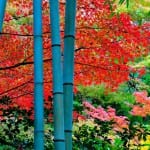 These days, we know how to pick our sake. There are classes or grades of sake that are legally defined that exist to help us. And we know these well: Daiginjo and junmai daiginjo, ginjo and junmai ginjo, tokubetsu honjozo and tokubetsu junmai below these, then honjozo and junmai-shu, and futsuu-shu below that. They are all legally defined, even if those definitions can be vague in areas. And while these grades are legal definitions, when it comes to indications of quality, “they’re more like guidelines” as they say in “Pirates of the Caribbean.”
These days, we know how to pick our sake. There are classes or grades of sake that are legally defined that exist to help us. And we know these well: Daiginjo and junmai daiginjo, ginjo and junmai ginjo, tokubetsu honjozo and tokubetsu junmai below these, then honjozo and junmai-shu, and futsuu-shu below that. They are all legally defined, even if those definitions can be vague in areas. And while these grades are legal definitions, when it comes to indications of quality, “they’re more like guidelines” as they say in “Pirates of the Caribbean.” But still they serve a great purpose and fill a need – making selection easier for the consumer. But while these grades have been around as law since about ’91, and as industry self-regulated agreements since the 80’s or so, there was a system of grading sake that was in place before the current one.
But still they serve a great purpose and fill a need – making selection easier for the consumer. But while these grades have been around as law since about ’91, and as industry self-regulated agreements since the 80’s or so, there was a system of grading sake that was in place before the current one.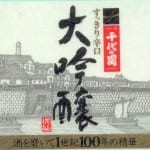 The way it worked was that brewers that wanted their sake officially ranked as First or Special Class would submit samples to the government. They would taste it and asses that yes, it was good enough for that rank, or no it was not. Those that passed the blind tasting assessment of a team of well-trained government sake tasters (great work if you can get it) were permitted to put Ikkyu (First Class) or Tokkyu (Special Class) on the label. And, of course, the tax on such ranked products was higher.
The way it worked was that brewers that wanted their sake officially ranked as First or Special Class would submit samples to the government. They would taste it and asses that yes, it was good enough for that rank, or no it was not. Those that passed the blind tasting assessment of a team of well-trained government sake tasters (great work if you can get it) were permitted to put Ikkyu (First Class) or Tokkyu (Special Class) on the label. And, of course, the tax on such ranked products was higher. But it began to unravel and wane in relevance and usefulness as smaller brewers began to come out with better and better sake, both in reputation and in sheer enjoyability. Not able to compete with the larger companies in national distribution, they kept things local. And as such, there was no reason to make their loyal customer base pay the extra tax for a Ikkyu or Tokkyu stamp on the label.
But it began to unravel and wane in relevance and usefulness as smaller brewers began to come out with better and better sake, both in reputation and in sheer enjoyability. Not able to compete with the larger companies in national distribution, they kept things local. And as such, there was no reason to make their loyal customer base pay the extra tax for a Ikkyu or Tokkyu stamp on the label. The next Sake Professional Course will take place in San Francisco on December 8 to 10. Learn more here.
The next Sake Professional Course will take place in San Francisco on December 8 to 10. Learn more here.




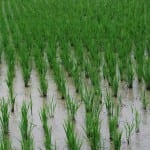
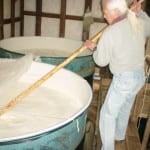
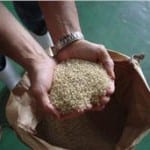

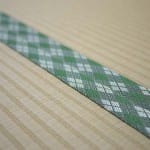

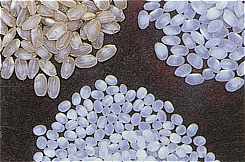



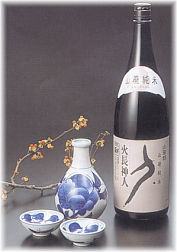 There is plenty of immensely enjoyable sake not in the top of the top classifications. In fact, sometimes such sake has more presence, uniqueness, and appeal than super dooper hoity toity high priced daiginjo. Well, sometimes, anyway. Top of PageSake is almost always fairly priced.
There is plenty of immensely enjoyable sake not in the top of the top classifications. In fact, sometimes such sake has more presence, uniqueness, and appeal than super dooper hoity toity high priced daiginjo. Well, sometimes, anyway. Top of PageSake is almost always fairly priced.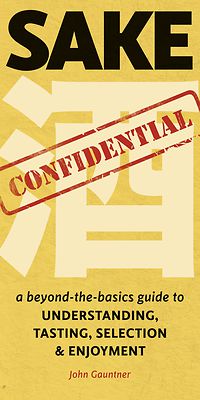

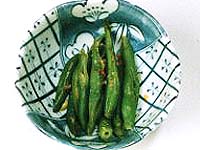 If you study the flavor profiles of sake from around Japan, you can easily see how well the local sake jibes with the original cuisine of the region. Sake from mountainous regions of Japan, like the Tohoku region in the north, is sturdier and more rice-laden in flavor, complementing well the salt-preserved and fermented flavors common in that region’s food. Sake from Shizuoka, Toyama and Miyagi are lighter and more supple, which works perfectly with the abundance of fresh fish found in these areas.
If you study the flavor profiles of sake from around Japan, you can easily see how well the local sake jibes with the original cuisine of the region. Sake from mountainous regions of Japan, like the Tohoku region in the north, is sturdier and more rice-laden in flavor, complementing well the salt-preserved and fermented flavors common in that region’s food. Sake from Shizuoka, Toyama and Miyagi are lighter and more supple, which works perfectly with the abundance of fresh fish found in these areas.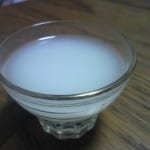
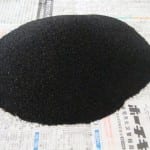
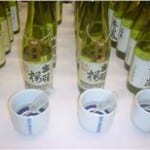

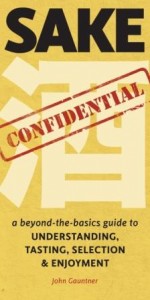
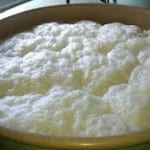
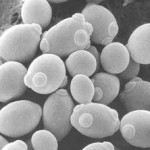 Back about 80 years ago when this organization was put together, they started to reproduce yeast that was known to be strong and predictable, and make it available to any brewer in the industry in little ampules. This helped ensure good sake, which led to good tax revenue. 😉
Back about 80 years ago when this organization was put together, they started to reproduce yeast that was known to be strong and predictable, and make it available to any brewer in the industry in little ampules. This helped ensure good sake, which led to good tax revenue. 😉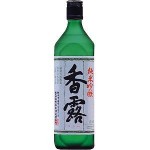 predecessors, it now may be giving Number 7 a run for the money in how commonly it is used.
predecessors, it now may be giving Number 7 a run for the money in how commonly it is used.
